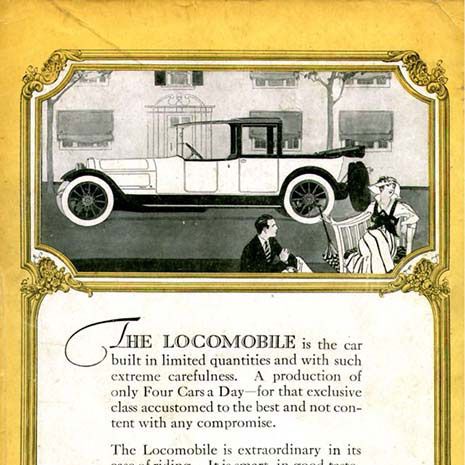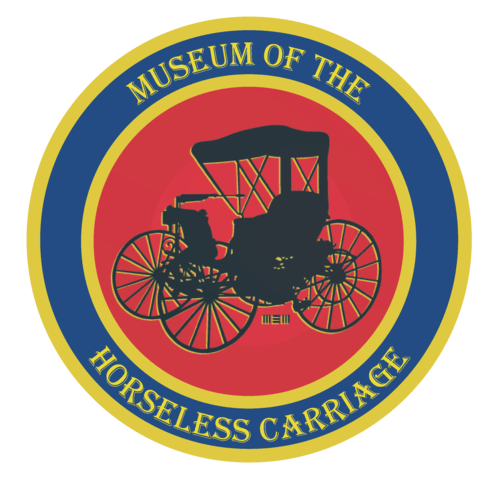The Primitive Land Vehicle
This time period tells the story leading up to the birth of the automobile, a history which begins in 1478 with Leonadro da Vinci’s drawing of a spring powered design and ends in 1886. Many of the examples during this time do not reflect the modern idea of what a horseless carriage is, and were merely conceptual. Most never progressed past drawings. A notable self propelled land vehicle from this time, pioneered in France, is Nicholas-Joseph Cugnot’s Fardier à vapeur , a large, three wheeled, steam powered vehicle with a top speed of 2.25 miles per hour. Studying steam power was not unique to Europe. Oliver Evans, an American Inventor in the Philadelphia area, worked extensively with steam technology and even patented and built an amphibious vehicle for commercial use in 1805. It was ultimately deemed impractical and later disassembled in 1808. The very end of this period is represented in the exhibit by the replica of the 1886 Benz Patent-Motorwagen.
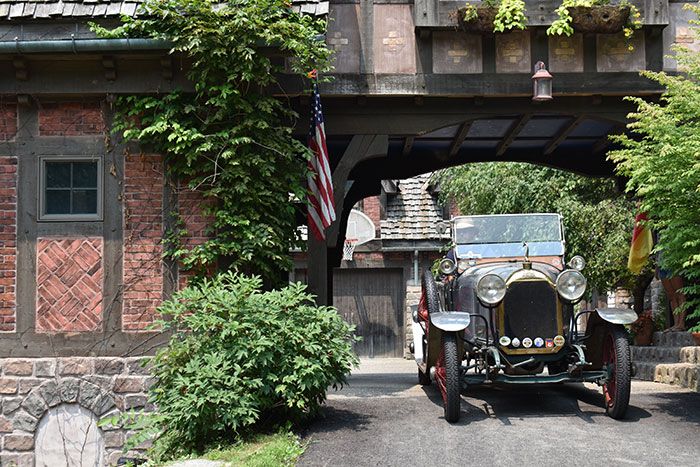
The Experimental Age
Seen as the Experimental Age of the automobile, 1887-1898 was an era dominated by many European engineers that were making a name for themselves by reaching production numbers in the thousands. Carl Benz had successfully produced multiple versions of the Benz Victoria which were successfully selling across Germany. Peugeot, De Dion-Bouton, Panhard and Daimler were other European automobile manufacturers reaching commercial success, just to name a few. Nearing the end of this period, American automobile inventors reaching any success were just beginning to appear. Charles Dureya and J. Frank Duryea, credited for creating the first successful gas-engine vehicle in the United States, began commercial production in 1895 and had sold just 13 vehicles by the end of 1896. This same year, Henry Ford is still experimenting with his first prototype, the Quadricycle.
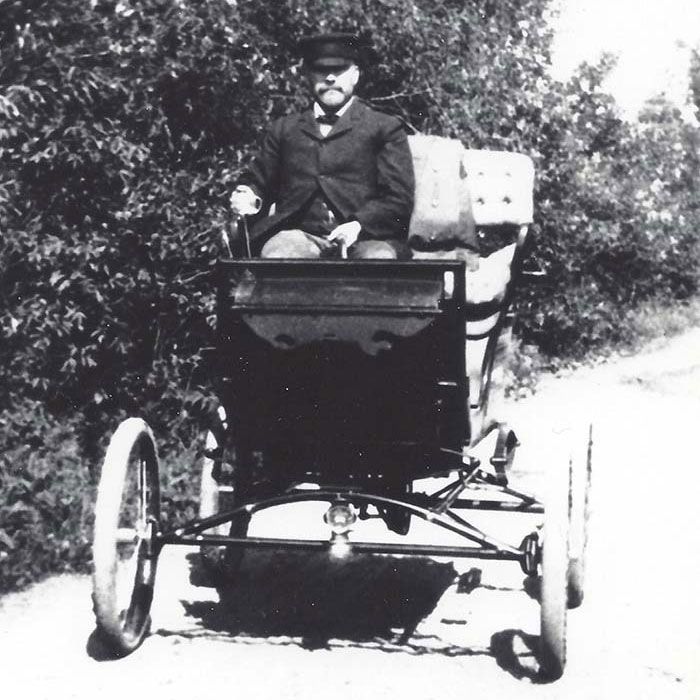
The Brighton Era
This period brought along strong growth of the automobile and more social intrigue across the World. Organizations like the Royal Automobile Club were gaining in popularity, and manufacturers were focused on reliability, speed, and performance. Automobiles in this period still reflect a primitive design, with most automobiles having one or two cylinder engines, while some manufacturers were producing four cylinder engines. Europe was still dominating in both design and manufacture during this period. In the United States, steam and electric powered vehicles outnumbered gasoline powered vehicles in 1900, and by 1904 the largest producer in America was Oldsmobile with 5,508 vehicles made. Today the Horseless Carriage Club of America recognizes the automotive time period before 1905 as the Brighton Era, named after the famed London to Brighton Veteran Car Run, originally held in 1896 as a celebration of the emancipation of strict rules and speed limits on land vehicles in the UK, it is the longest running motoring event. Vehicles produced before January 1st, 1905 are eligible.
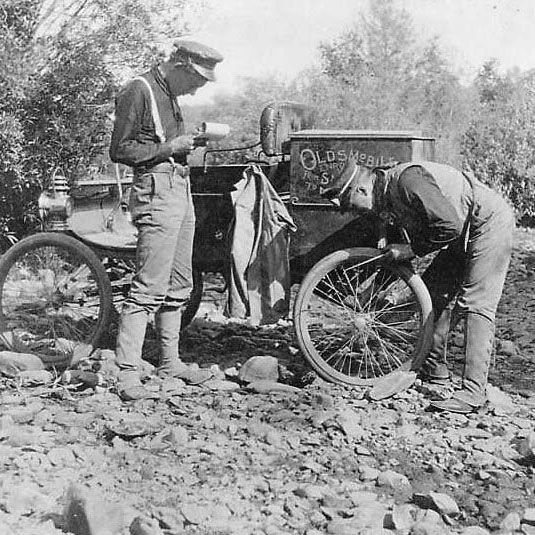
Strength In Numbers
With many manufacturers fine-tuning their designs and vehicles becoming larger and more sophisticated, we see strength in numbers represented in more ways than one. The number of automobile producers in the United States increased dramatically, and a majority of manufacturers had adopted a 4 cylinder engine as standard with larger configurations appearing soon after. Production numbers increased tenfold in this time period with no stopping in sight. Oldsmobile had only produced 6500 vehicles in 1905, but in 1911 Ford had produced almost 70,000 vehicles. Cadillac had won awards for their progress in production standardization in 1908; the automobile had fully arrived in the United States. Many American manufacturers were competing during this time, proving dominance in the field by winning races like the New York to Paris Race, won by Thomas Motor Company , and the Vanderbilt Cup Race won by Locomobile Company of America. The increases in size and power made in automobiles during this time weren’t without opposition, shown in this exhibit by the 1909 Brush and the 1909 Holsman, two manufacturers who felt that the advances were not necessary for the everyday automobile, and opted to stick with smaller automobile design and one or two cylinder engines. Many vehicles of this time period are popular in the HCCA due to the heavy use of brass trim and the absence of front doors on most automobile bodies.
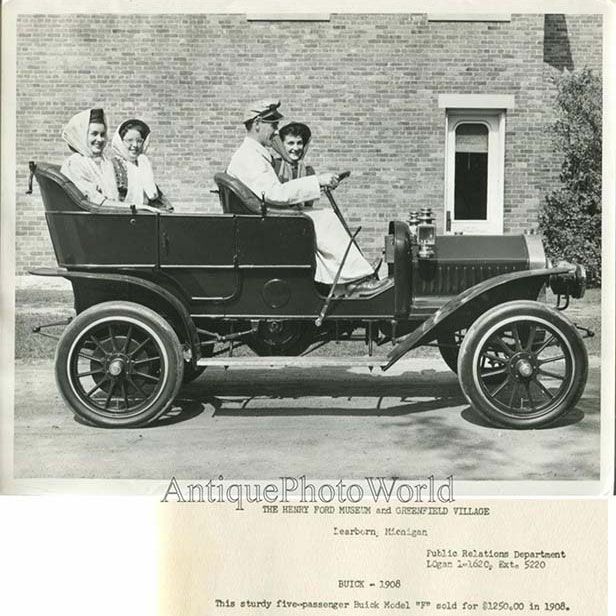
The Modern Age
The Modern age of the Horseless Carriage sees many advances in automobile design, function, and safety. Engines were continuing to grow and become more refined in their design, even seeing a production V-12 configuration introduced by Packard in 1915. Steam and electric powered vehicles were improving as well, but gas powered automobiles had taken the lead. Cadillac is credited with the advent of the electric starter for a production vehicle in 1912, making automobiles much easier and safer to start. Enclosed body styles by many manufacturers were on the rise as well through this time period, with open body styles developing more of a cabin style body with front doors and cowls. Mass production of automobiles had become commonplace with some manufacturers focusing on making the everyday automobile less expensive and obtainable for the average person. Numerous automobiles produced in this time period are favored among HCCA Members for their reliability, power, and ease or operation. Modern and stronger plating processes such as nickel resulted in less manufacturers using brass for their automobiles, truly defining the end of the Brass Era.
